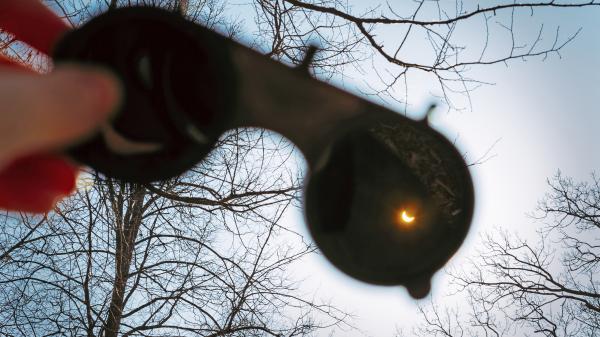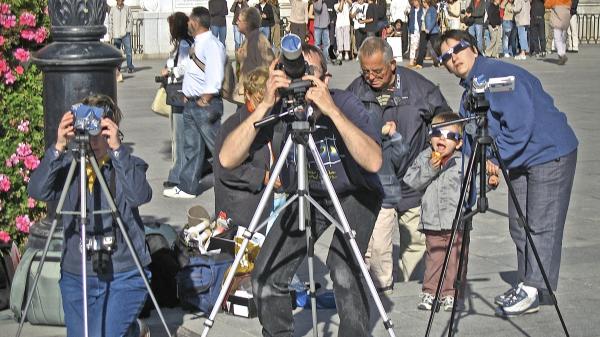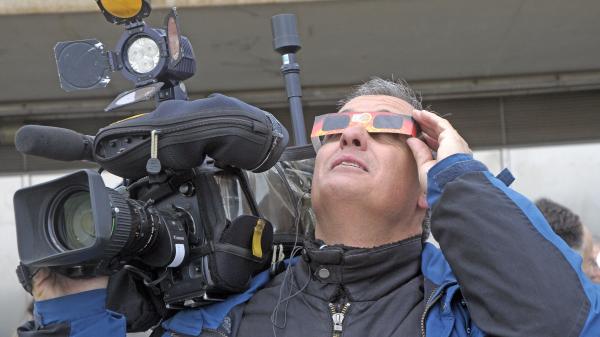How to Take Pictures of a Solar Eclipse
It takes some skill and some extra equipment to take dramatic pictures of a solar eclipse. But it is possible to capture the mood even with a simple cell phone camera.
First of all, protect your eyes!
Never look directly at the Sun without proper eye protection. You can seriously hurt your eyes, and even go blind.

If you don't have a zoom lens, try to focus on details around the eclipse.
©iStockphoto.com/bruev
Plan Your Pictures
Whether you have a smartphone or a more complex camera, planning is the key to a successful shot.
- Find the next solar eclipse. If you use a compass to angle your camera, make sure to take into account magnetic declination.
- Scout your location a few days ahead. Meet up early to avoid crowds and position yourself.
- Check the weather! Dense clouds can cover a solar eclipse, but scattered clouds can add interest to your image.

Phone camera opportunity: People watching the 2005 annular solar eclipse in Spain.
©iStockphoto.com/ONA_PLANAS
Can I Use My Phone Camera?
You cannot expect to take spectacular pictures of a solar eclipse using only your cell phone because smartphones and small compact cameras have a wide and small lens and a small sensor.
But, there are ways to capture the eclipse by playing to the strengths of your mobile phone.
- Find interesting scenery. Solar eclipses change both the light and shapes of the shadows. Compose your image by including trees, buildings, and reflections.
- Turn around. Sometimes the best picture is behind you.
- Project the Sun. Make a pinhole projector, and take pictures of the projection.
- Turn off your flash. Flash will disturb the natural light.
- Not happy with the result? Play around, and try again.
How to take sunrise and sunset pictures

For detailed pictures of a solar eclipse you need more than a cell phone camera. Cameraman watching the 2015 partial solar eclipse in Spain.
©iStockphoto.com/AlbertoRoura
DSLR Cameras and Extra Equipment
A good digital single-lens reflex (DSLR) camera gives more control over the image components, but it also requires more equipment and skill.
- Eclipse filter. A special filter made for solar viewing must be used when photographing the Sun. Not using a filter can damage your camera.
- Focus carefully. Focus on the Sun's edge, and readjust your focus during the eclipse. Practice on the Moon or a bright star the night before.
- Big lens. Use a focal length of at least 400mm or more.
- Stabilize. Put your camera on a tripod or anywhere stable like a fence or the ground. Use your timer or a shutter with a cord to minimize movement in the camera.
- Protect your eyes. Use the preview screen to view your composition.
- Give your camera breaks. The internal components can overheat and get damaged.
- Switch to manual. Manual gives more control of exposure. Bracket your exposures by shooting at various shutter speeds.
- High resolution. To capture as much information and detail as you can, set your camera to the highest resolution (jpeg) or take uncompressed images (tiff or raw).
- Keep shooting. Play around with the shutter speed for different exposures.
- Edit your images. You can crop, add contrast, tweak colors, layer, and so much more, by processing your images in Photoshop, Lightroom, or even free photo processing software online.